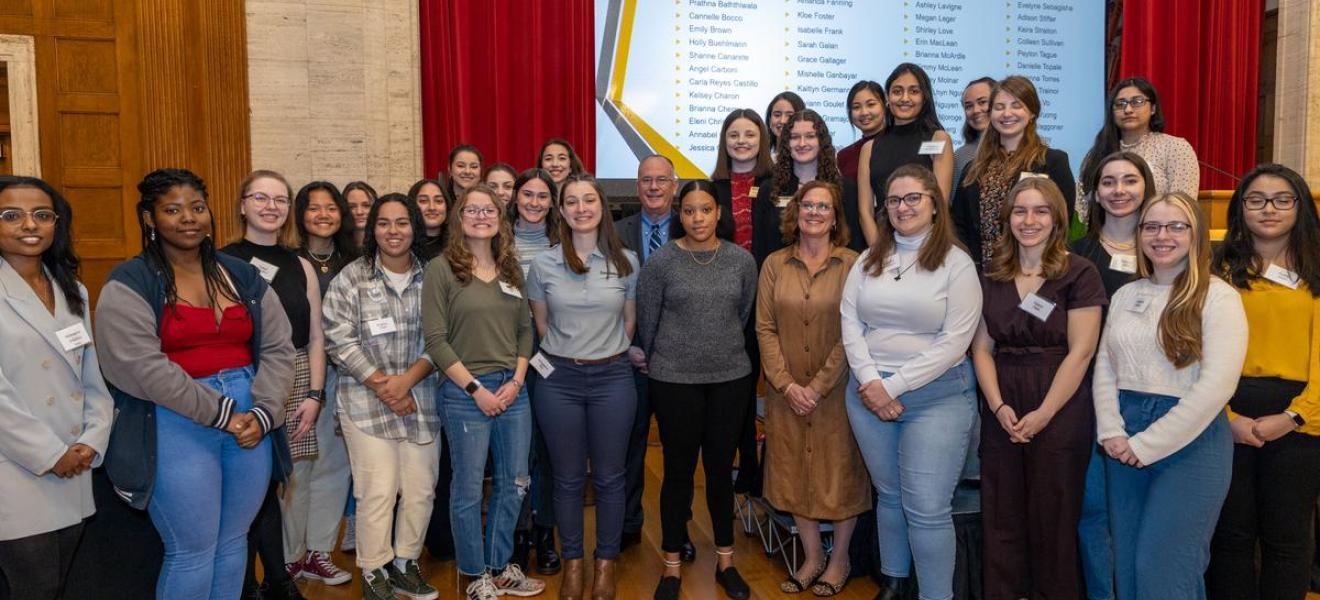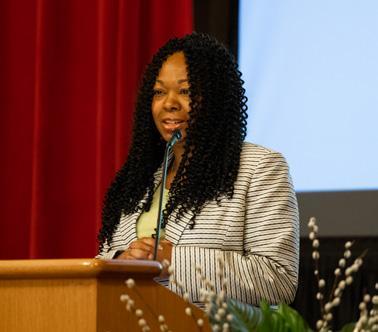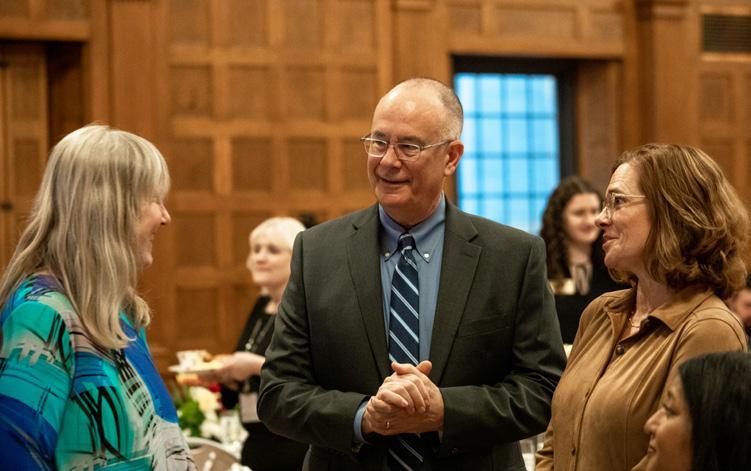Initiative Aims to Create Community among Women

The first women to enroll at Wentworth arrived 50 years ago this year: Doris Dennis, Jane Estella, Virginia Butcher, Deborah Banks, and Susan Hardt. “Know your history,” urged Vice President of Diversity, Equity, and Inclusion Nicole Price at this year’s Women @ Wentworth breakfast marking this milestone. “Because there are people who have built a foundation upon which you can launch.”

IT’S A SENSE OF HISTORY that’s driving the university to build on that foundation.
According to the United States Census Bureau, women make up nearly half of the U.S. workforce but account for only 27% of workers in STEM occupations. “Our numbers reflect the national experience,” said Dr. Susan Duffy, associate provost for Transformational Learning and Partnerships at Wentworth. “We need to have the full human spectrum come together to innovate or we’re not going to survive.”
Women currently make up 23% of the overall student body, with variation across majors. As part of its commitment to inclusive excellence, the university has a goal of increasing this number by 50 percent over the next five years; however, the challenge lies not just in attracting women to Wentworth, but in ensuring they are able to thrive once they are here.
“I think it goes without saying that the construction industry is primarily male-dominated, so I am typically one of the few females,” said Catherine Roden ’22 at the 15th annual Women @ Wentworth breakfast this spring. “Having been around construction from a young age, I didn’t realize how stigmatized being a woman in the field still is.”

The Women @ Wentworth Undergraduate (UG) Leadership Program aims to remedy that. Launched this fall, the initiative will create a community where students can develop leadership skills, build networks, and cultivate courage for a lifetime of success.
Participating students will earn micro-credentials toward badges, with four badges (one per academic year) equaling a certificate in Women’s Leadership. While content and conversation may be focused on women, students of all identities are welcome to engage, live, and learn as a community committed to understanding each other’s personal and professional lived experiences.
To make entering the program less intimidating, activities in which students are already engaging, such as varsity sports or women-focused clubs, count toward badges. Among the planned new opportunities are all-women living and learning residential community and leadership workshops, as well as a series of welcome events.
“Every one of us has that place where we’re not quite comfortable to step across the threshold,” said Duffy. “These programs give [students] the courage to do that to leap from . . . their own leadership edge.”
More information can be found online.
